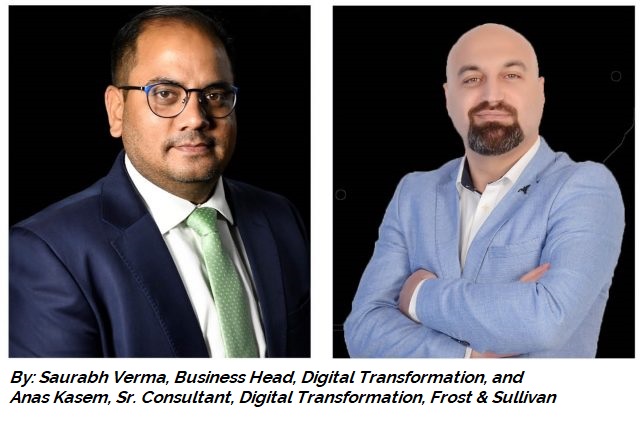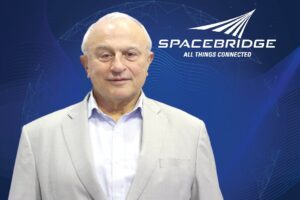5G is witnessing rapid growth in terms of network deployments across the world. Operators are deploying 5G towers to increase their coverage and introducing new bundles and value propositions to support and drive the consumer adoption. As of now, the penetration rate of 5G services among consumer segment of the market is relatively higher than it is for the enterprise segment. However, 5G goes beyond the traditional 3G/4G models, which were largely consumer centric. Operators will need to go beyond consumers to capitalize on the true potential of 5G. The key is to develop and prioritize use cases that can benefit the enterprise segment, and invest in business models for different use case scenarios for mid to long term.
This would also support operators’ growth by delivering new 5G services to the organizations. The quick win is to target organizations and verticals that need nation-wide connectivity without the limitations of traditional 4G. One of the available solutions to address this challenge is for operators to deliver dedicated internet access over 5G, similar to what they offer over microwave, fiber or VSAT. The new delivery model on one hand would diversify operators’ revenues, and would deliver greater and unique benefits to organizations on the other hand.
Why 5G Dedicated Access is Important?
Fast internet is not a luxury in today’s world. Organizations demand faster speeds and best of the user experience, and their expectations are constantly growing. Current dedicated internet access delivery models vary and the most common offerings are microwave, fiber or VSAT. Dedicated internet access over 5G delivers higher value for both telcos and organizations. Fiber lines are expensive and operationally tedious to deploy; additionally, they are susceptible to be cut accidentally. On the other hand, the in-city coverage of fiber is not comprehensive in major big cities. Covering the whole city with fiber lines could take years and can often lead to complications with municipalities.
In-city areas which are not covered by fiber, fixed wireless delivery model emerges to address the coverage gap. However, it comes with its own issues like reliability and availability. Fixed wireless is heavily impacted the weather conditions, especially in Middle East region, where sand storms and seasonal heavy rain are quite common and disruptive. Telecom operators can benefit from the existing poles on which wireless antennas are deployed on, and replace them with 5G antennas to maintain the line of sight, minimizing the replacement cost in the process. With the enterprise-class 5G outdoor CPE launch, telecom operators can offer guaranteed speeds, latency controls and guaranteed SLAs. With 5G dedicated access, customers can utilize 5G CPE to access enterprise networks instead of using microwave access.
VSAT is often used in remote areas like desert or middle of the sea as well as in complex terrains like mountains, that too without major infrastructure investment. However, an issue with VSAT is its susceptibility to weather changes. Turbulent weather can adversely affect satellite internet, or knock it out entirely. During rains or sandstorms, the radio signals between ground and satellite are diffused and weakened. Apart from that, VSAT is an astronomically expensive service and limited bandwidth.
5G Dedicated Internet Access Application and Opportunity for Industries
Oil and Gas
The Oil and Gas industry cannot compromise on a stable and seamless connectivity; their operating requirements are far more rigorous and demanding than other industries. Looking into the wide landscape of O&G operations, it is common for O&G organizations to use multiple network methods. In offshore upstream locations, VSAT is primarily used, while in the onshore locations, fiber and/or 4G is commonly used.
In the onshore locations, O&G companies have redundant fiber links as well as private networks based on 4G. Industry 4.0 brings new use cases that both fiber and 4G networks cannot support such as RPA, mission-critical communications, real-time CCTV monitoring, to name few. These use cases require fast and reliable connectivity to run effectively. 5G introduces the capability to support these use cases in the mission critical field, hence the need for dedicated internet access over 5G is critical to modernize the operations in the O&G onshore landscape.
The global market trends indicate the continued growth in off-shore platforms in deep sea, with most of them being further from the shores. Oil and gas platforms’ remoteness and isolation, harsh sea conditions, strong and unpredictable winds, water, extreme temperatures, and distance from the shore are some of the many challenges strengthening the need for a robust communications system. Routine operations alone require transmission of an insuperable volume of data and reports on logistics, supply, production etc. VSAT terminals that are deployed in the offshore locations are not capable and reliable to deliver the mission-critical communication; hence, it is a crucial for O&G to replace the VSAT terminals with 5G dedicated access to bring the value of ultra-low latency, high bandwidth, and real-time communications.
Banking and financial services
Similar to O&G, the banking industry too is heavily reliant on the undisrupted availability of the internet. A massive volume of consumers use ATMs for money withdrawal, payment, service requests, and other transactions. Latest statistics showed that in Saudi Arabia and UAE alone, the number of ATM transactions was approximately 627 Million resulting into a more than SAR 315 Billion in terms of the value of such transactions. Moreover, the number of ATMs in Saudi Arabia and UAE alone stood at 24,193 in 2019.
These figures confirm the heavy dependency on reliable connectivity to carry out the transactions. Internal banking and trading platforms are critically dependent on reliable and fast connectivity. As the low latency sometimes causes major disruptions in transactions, it is crucial for banks to have ultra-low latency connectivity for efficient banking activities. At present, ATMs are connected either to the fiber network or VSAT. The in-city ATMs are mostly using the fiber network, which is again susceptible to cut. Once it is cut, it takes a significant amount of time to fix it and restore the operation. On the other hand, fiber lines don’t come with redundancy and this where 5G can be a backup to the fiber lines. Deserted ATMs in the high ways or small cities, as well as some of in-city ATMs are connected often to the bank HQ via VSAT terminal. It is important to reiterate that VSAT terminals don’t come in redundancy mode, i.e. once their direction is distorted by the wind, it could take a few days to get fixed; and hence high availability on VSAT terminals isn’t guaranteed. Additionally, the latency of VSAT is significantly high, where the transaction has to travel to the satellite and go to the bank HQ and return back to the ATM terminal.
With that being said, the reliability and latency challenges presented pose a serious risk in terms of revenue as well as service disruption, thereby jeopardize their reputation. Reliable, fast and ultra-low latency connection is critical to deliver basic as well as critical services. This is where 5G dedicated access comes into play to overcome these challenges. Implementing 5G dedicated access in banks’ HQ, and replacing the VSAT with 5G dedicated access would deliver more efficient banking services and superior customer experience.
Healthcare/Hospitals
Most of hospitals host their IT at on premise data centers. In a connected and digital world, medical equipment produce large volume of data; and doctors often require immediate access to this data on demand. This is one of the major reasons behind keeping the data center inside the hospital premise. Arguably, for long time, hospitals’ CIOs wanted to move to cloud, but the volume of data and its undisrupted accessibility has been a challenge.
Accessing large size data on demand from cloud requires fast and reliable connectivity, which is unavailable through traditional connectivity models, including fiber. With the rapid technology adoption in the healthcare industry, machine learning is quickly gaining prominence by delivering critical support for doctors to analyze images, and diagnose patters that are not recognized by human eyes. With that being said, the machine learning platforms are extremely expensive to be hosted at the data centers, and cloud is better (if not the only) solution to address this. However, before addressing the cloud adoption journey, the connectivity challenge must be addressed. Connecting hospitals with cloud service provider via 5G dedicated access not only ensures the fast accessibility to large volume of data, but also allows the CIOs to innovate new services and reduce their expenditure.
ISP
Today, ISPs are delivering internet services by setting up POPs at various parts of the country, and also leveraging their backbone network to have the last-mile fiber. ISPs resell the broadband connectivity, fiber links, and internet lines to businesses. They could play a crucial role to resell the dedicated internet access over 5G as well, which will surely add another revenue stream for telcos.
Opportunity for Telcos in GCC
5G dedicated access offers tremendous opportunity to telecom operators, and it is up to them to capitalize and make the most of this opportunity. The above discussed use cases clearly establish the fact that the traditional connectivity models aren’t scalable enough to cater to the needs and challenges of the organizations. Combining 5G dedicated access with cloud services could potentially create several use cases for industries requiring ultra-fast and reliable connectivity in addition to cloud offering. In the GCC, as well as in several parts of the world, industrial sites, retail shops, stadiums, event sites etc. are mandated to install CCTV cameras, which is where telcos can bundle the CCTV monitoring service on cloud with 5G access. Several other similar services could be designed through 5G dedicated access.
Regionally, VIVA Kuwait has launched the 5G solutions for enterprises, following its launch of 5G for consumers (smartphones packages); the set of 5G connectivity enterprise solutions includes dedicated data access, dedicated internet access, and on-demand services such as CCTV and Cloud PBX. Based on the current state of connectivity infrastructure and rapid evolution of organizations’ demands, 5G dedicated access will eventually gain the pull factor; operators that would start early would certainly have a significant competitive advantage over others.
Conclusion and Outlook
With the increasing demand for reliable and ultra-high speed connectivity on one hand, and the rapid adoption of emerging technologies on the other hand, there is no denying that existing ways of connectivity are struggling to cope up with the market demand. Additionally, organizations will have to eventually look for alternate sources of internet that can support their IT and business needs in the era of Industry 4.0. The existing networks (4G, VSAT, and Fiber) aren’t scalable and competent to deliver the aggressive demands on new use cases.
On the other hand, telcos are eager to diversify their revenues. 5G delivers a great opportunity, but sticking to 5G for consumers will neither deliver the long term growth, nor justify their 5G investments. Therefore, it is imperative for operators to diversify their focus on the enterprise segment and utilize their 5G investments to develop innovative use cases, and 5G dedicated access is a good starting point to consider, particularly for SMEs and large enterprises with limited fiber or copper coverage, or those enterprises aiming to replace microwave.
To summarize, compared with the microwave private lines, the 5G dedicated access private line brings 3 key business values:
1. Replacement of microwave or fixed network access, easy engineering, which can save 70% cost in engineering and equipment cost according our analysis
2. CPE support Plug-and-Play enables fast service provisioning; the deployment time can be reduced from 5 or 7 weeks to 1 day
3. One 5G base station can cover different scenarios: enterprise users, mobile users, and residential users; which enable operator is easy to offer integrated service and tariff package to increase revenue
In a bid to monetize their 5G investments, operators that start early will be better positioned to encash the opportunity offered by 5G dedicated access. VIVA Kuwait is the first regional telco to deliver dedicated internet access over 5G along with set of other enterprise services. Other telcos too are expected to follow a similar quite, and it is only a matter of time.














